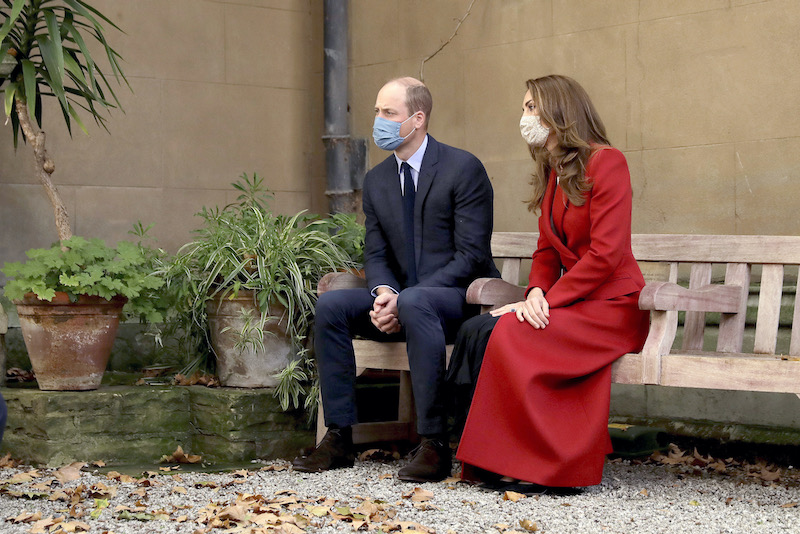Thanks to the brilliance of the NHS, the target of vaccinating the 15 million most vulnerable against Covid has just been reached. Cast your mind back a year. Covid, a mysterious new infection, was only just creeping its way up the news agenda. Yet here we are today with multiple effective vaccines (with many more in the pipeline) and medics have made massive strides treating those of us who become seriously ill with this terrible disease. Ok, we’re not out of the woods yet, but once again, I find myself thanking God for modern medicine: I’m alive today because of medical advances made in my own adult life and a recent bout of nasty gastritis made me contemplate the wonders of antibiotics, antivirals, antiseptics and effective pain relief.
How different things were in earlier centuries when life, according to the old adage, was “nasty, brutish and short”. But despite what Blackadder, Monty Python and countless History Channel documentaries would have you believe, our medieval ancestors weren’t stupid. Nor were they entirely helpless in the face of illness and disease. As was so often the case, monasteries were at the forefront, providing both physical and spiritual healing.
“Before and above all things, care must be taken of the sick, that they be served in very truth as Christ is served,” says Chapter 43 of the Rule of St Benedict, the set of regulations that governed life in many monasteries in medieval England.
Life within the cloister was thought to provide an opportunity to live an angelic life on earth, elevating spiritual concerns above those of the body. But in reality, the austerities demanded by monastic rules could lead to illnesses that prevented monks and nuns from fulfilling their spiritual obligations. Long hours were spent praying in cold, drafty churches. In the thirteenth and fourteenth centuries, this caused monks at several English monasteries to receive special permission from the pope to wear wooly hats while in their chilly churches because of their “rheumy” noses.
The monastic diet – based on coarse bread and vegetables – could also lead to health problems. A twelfth-century abbot of Battle is known to have suffered from such severe flatulence that he sought permission from the archbishop of Canterbury to sleep in his own chamber, lest the sounds and smells emanating from him disturbed his brethren. Gastric complaints appear to have been an ever-present concern for monks and by the fifteenth century it was the richness rather than the meagerness of the monastic diet that was causing problems, including severe constipation. A late medieval abbot of Muchelney jotted down a couple of recipes for its relief in the end pages of his breviary. One was a laxative consisting of various fruit extracts, the other required the patient to “take a pese of sope, make hit smale and putt yt in youre fundamewnt”. And yes, “fundamewnt” is exactly what you think it is.
Careful provision was made to look after the physical and spiritual well-being of ill and elderly monks and nuns, either to nurse the individual back to health or to prepare their soul for its final journey to the next world.
Benedict’s Rule states that sick monks should be cared for in a special room called an infirmary. This was typically in a quiet and secluded location, usually to the east of the main complex of monastic buildings. The ruins of impressive infirmary complexes can be seen at scores of medieval monasteries, Furness being a prime example.
Here and elsewhere the infirmary consisted of a large stone-built hall, with beds for the sick monks or nuns arranged along the sides at right angles to the wall. A senior monk or nun called the infirmarian was responsible for the care of individuals (usually called inmates) admitted to the infirmary, where the normal austerities of the monastic life were relaxed. A fire was kept burning to provide warmth. The consumption of meat – normally forbidden – was allowed, and infirmaries had their own kitchens for its preparation. At Bury St Edmunds, soothing music was played in the infirmary to speed the recovery of patients, and the convalescing were permitted to take some recreation in the monastery’s garden. Some conversation was also permitted, but the playing of chess or dice were forbidden in case it caused excitement.
Infirmary inmates were excused from attending the eight daily church services that punctuated the monastic day. However, the spiritual care of monks and nuns in the infirmary was arguably more important than their physical care. All infirmaries were provided with a chapel. This was located at one end of the infirmary – usually the east – and was positioned so that the services celebrated there were visible and audible to the inmates.
The abbot or prior, and their female equivalents, were supposed to visit the infirmary daily to check on the welfare of the inmates. St Aelred of Rievaulx took this responsibility seriously. Before his appointment as abbot of Rievaulx, he briefly served as abbot of Revesby Abbey, Lincolnshire. During a routine visit to the infirmary there he miraculously healed the ailing sub-prior who was on the point of death. Other abbots were not so diligent. In 1442 abbot of Hailes received a stinging telling off because of the inadequacy of the food and clothing provided to patients in his abbey’s infirmary.
The libraries of medieval monasteries often included books on medicine. Copies of a work by the seventh-century author Theophilus of Byzantium on the analysis of urine survive from St Augustine’s, Canterbury, and Bury St Edmunds.
For the most part, the principles of medical care within monasteries (and wider medieval society) were based on the writings of ancient authors such as Hippocrates and Galen. The later is widely credited with developing the theory of the four humours – blood, yellow bile, black bile and phlegm. Good health was dependent on keeping these in balance. Regular bloodletting was therefore an important part of the monastic routine. It was something to look forward to as it was followed by some “R and R” in the infirmary.
Medicines were also available for the treatment of some ailments. Many monastic infirmaries had their own cloisters, the central space –or garth – sometimes serving as a garden, doubtless for the cultivation of medicinal plants or herbs. A manuscript, dating to c.1100, with illustrations of various herbs and descriptions of their curative properties, survives from Bury St Edmunds Abbey.
Monasteries would also have given limited medical care to the laity as part of their responsibility to provide charity and hospitality. Some medieval hospitals were also established specifically to serve the needs of the populace. The Royal Garrison Chapel, Portsmouth, traces its origins go back to about 1212 when Bishop Peter des Roche of Winchester founded a hospital called the “Domus Dei” (House of God) to look after pilgrims, the sick and elderly.
Arguably the most famous medieval hospital of all is St Bartholomew’s in London. This was both hospital and monastery, run by the Augustinian canons. For the last 900 years its been doing its best to make the lives of Londoners that bit less nasty, brutish and short. Thank God for that.



 Loading ...
Loading ...
What do you think?
You can post as a subscriber user ...
User comments (1)
AK